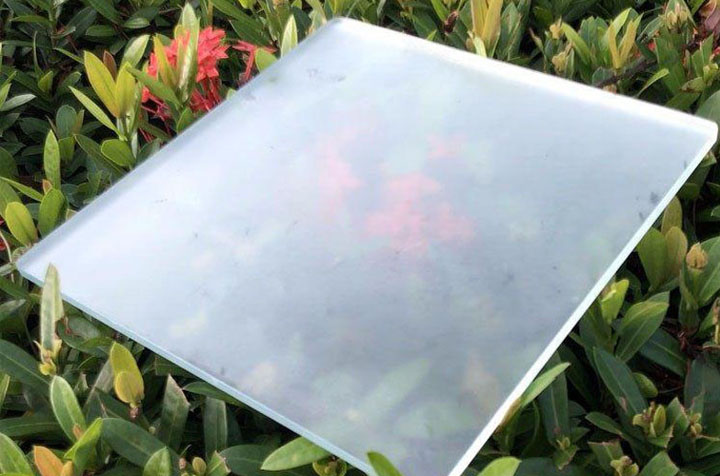Exploring the World of Architectural Glass Suppliers Trends, Innovations, and Sustainability
In the ever-evolving realm of architecture and design, the importance of glass cannot be understated. Glass is not just a functional element; it plays a pivotal role in aesthetics, sustainability, and safety. Architectural glass suppliers are at the forefront of this transformation, offering an array of products that significantly contribute to modern buildings’ design and functionality.
Diverse Types of Architectural Glass
Architectural glass can be categorized into several types, each serving distinct purposes. The most common types include tempered glass, laminated glass, insulated glass units (IGUs), and low-E glass.
1. Tempered Glass Known for its strength and safety, tempered glass is produced through a process of extreme heating and rapid cooling. This process makes it much stronger than normal glass, reducing the likelihood of shattering upon impact.
2. Laminated Glass This type of glass comprises two or more layers of glass, held together by an interlayer. It offers superior safety and soundproofing capabilities and is often used in commercial buildings and skylights.
3. Insulated Glass Units (IGUs) Comprising multiple panes separated by a spacer, IGUs are designed to provide thermal insulation. They are crucial in modern energy-efficient buildings, helping maintain indoor temperatures and reduce heating and cooling costs.
4. Low-E Glass Low-emissivity (Low-E) glass features a microscopically thin coating that reflects heat while allowing natural light to pass through. This makes it an excellent choice for energy efficiency, as it helps control indoor temperatures without compromising natural light.
Innovations in Architectural Glass
The world of architectural glass is continually changing, driven by technological advancements. One of the most exciting innovations is the development of smart glass, which can change its properties in response to environmental conditions. Smart glass technology can adjust transparency and solar heat gain to increase energy efficiency in buildings.
architectural glass suppliers
Moreover, the introduction of self-cleaning glass has transformed maintenance practices in skyscrapers and large buildings. This type of glass has a special coating that allows dirt and grime to be washed away by rainwater, significantly reducing the need for manual cleaning.
Another trend is the rise of printed glass and decorative glass. With advancements in digital printing technology, architects can now customize glass surfaces with vibrant colors and intricate designs, allowing for greater creative freedom in building design.
Sustainability in Architectural Glass Supply
As sustainability becomes a crucial focus in architecture, architectural glass suppliers are finding ways to minimize their environmental impacts. The production of glass is energy-intensive; however, innovative suppliers are adopting practices that reduce energy consumption and emissions.
Recycling and the use of recycled materials in the production of glass are becoming more prevalent, reducing the need for raw materials and minimizing waste. Additionally, the use of energy-efficient manufacturing processes is on the rise, aligning supply practices with sustainable building standards such as LEED (Leadership in Energy and Environmental Design).
Furthermore, suppliers are also focusing on promoting products that enhance the overall sustainability of buildings. By providing high-performance glass that improves insulation and reduces reliance on artificial lighting, they contribute to better energy management in buildings.
Choosing the Right Supplier
When selecting an architectural glass supplier, architects and builders must consider several factors. Product quality, compliance with building codes, innovative solutions, and commitment to sustainability are paramount. It’s vital to work with suppliers who understand the specific requirements of a project and can offer tailored solutions that meet both performance and aesthetic needs.
Conclusion
The role of architectural glass suppliers in the design and construction industry is increasingly integral. Through innovations in product offerings and a commitment to sustainability, they are helping shape the future of architectural design. As modern architecture continues to evolve, the partnership between architects and glass suppliers will remain crucial in creating functional, beautiful, and environmentally responsible buildings. Embracing these advancements and working closely with suppliers will ensure that architects can meet the challenges of today's design landscape while contributing to a more sustainable future.
 Afrikaans
Afrikaans  Albanian
Albanian  Amharic
Amharic  Arabic
Arabic  Armenian
Armenian  Azerbaijani
Azerbaijani  Basque
Basque  Belarusian
Belarusian  Bengali
Bengali  Bosnian
Bosnian  Bulgarian
Bulgarian  Catalan
Catalan  Cebuano
Cebuano  Corsican
Corsican  Croatian
Croatian  Czech
Czech  Danish
Danish  Dutch
Dutch  English
English  Esperanto
Esperanto  Estonian
Estonian  Finnish
Finnish  French
French  Frisian
Frisian  Galician
Galician  Georgian
Georgian  German
German  Greek
Greek  Gujarati
Gujarati  Haitian Creole
Haitian Creole  hausa
hausa  hawaiian
hawaiian  Hebrew
Hebrew  Hindi
Hindi  Miao
Miao  Hungarian
Hungarian  Icelandic
Icelandic  igbo
igbo  Indonesian
Indonesian  irish
irish  Italian
Italian  Japanese
Japanese  Javanese
Javanese  Kannada
Kannada  kazakh
kazakh  Khmer
Khmer  Rwandese
Rwandese  Korean
Korean  Kurdish
Kurdish  Kyrgyz
Kyrgyz  Lao
Lao  Latin
Latin  Latvian
Latvian  Lithuanian
Lithuanian  Luxembourgish
Luxembourgish  Macedonian
Macedonian  Malgashi
Malgashi  Malay
Malay  Malayalam
Malayalam  Maltese
Maltese  Maori
Maori  Marathi
Marathi  Mongolian
Mongolian  Myanmar
Myanmar  Nepali
Nepali  Norwegian
Norwegian  Norwegian
Norwegian  Occitan
Occitan  Pashto
Pashto  Persian
Persian  Polish
Polish  Portuguese
Portuguese  Punjabi
Punjabi  Romanian
Romanian  Russian
Russian  Samoan
Samoan  Scottish Gaelic
Scottish Gaelic  Serbian
Serbian  Sesotho
Sesotho  Shona
Shona  Sindhi
Sindhi  Sinhala
Sinhala  Slovak
Slovak  Slovenian
Slovenian  Somali
Somali  Spanish
Spanish  Sundanese
Sundanese  Swahili
Swahili  Swedish
Swedish  Tagalog
Tagalog  Tajik
Tajik  Tamil
Tamil  Tatar
Tatar  Telugu
Telugu  Thai
Thai  Turkish
Turkish  Turkmen
Turkmen  Ukrainian
Ukrainian  Urdu
Urdu  Uighur
Uighur  Uzbek
Uzbek  Vietnamese
Vietnamese  Welsh
Welsh  Bantu
Bantu  Yiddish
Yiddish  Yoruba
Yoruba  Zulu
Zulu 

